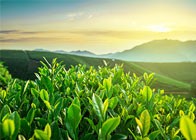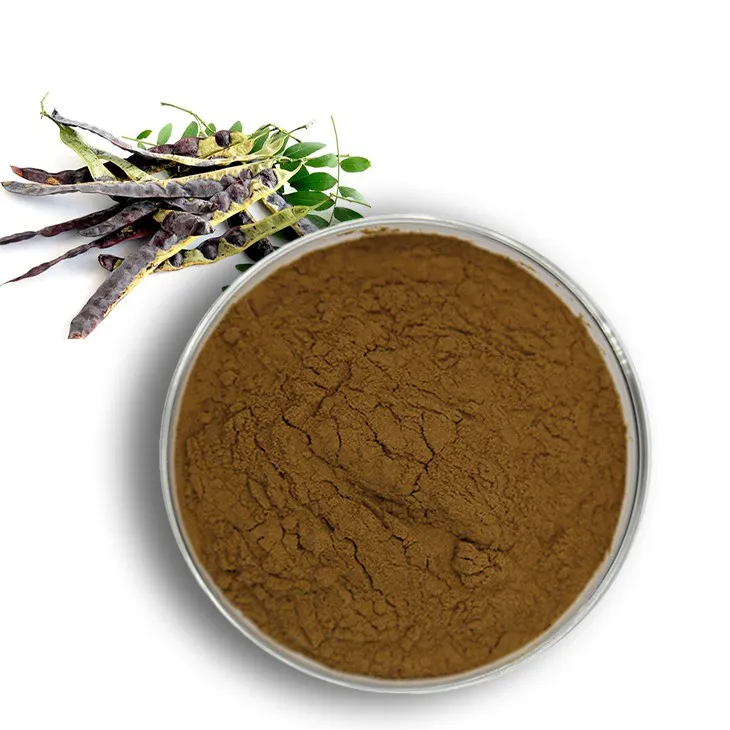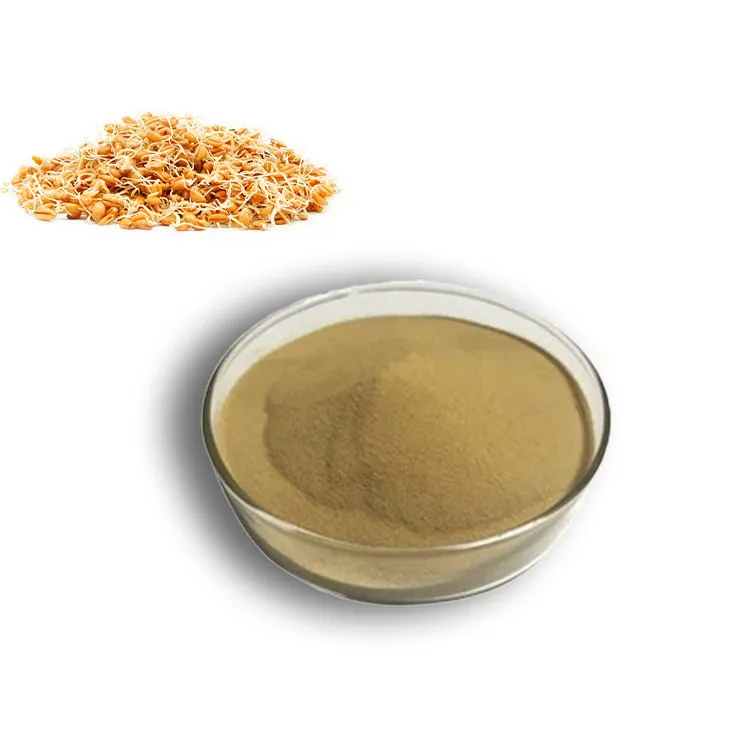- 0086-571-85302990
- sales@greenskybio.com
From Field to Bottle: Modern Techniques in Plant Oil Extraction
2024-07-25
1. Introduction
Plant oils play a significant role in various aspects of our lives, from cooking to cosmetics and even in some industrial applications. The journey of plant oils from the field to the bottle involves a series of carefully coordinated steps. This article aims to explore these steps in detail, with a particular focus on modern extraction techniques and the associated processes.
2. The Agricultural Foundation
2.1 Plant Selection
The first step in the journey of plant oil production is the selection of suitable plants. Different plants are chosen based on various factors. For example, some plants are selected for their high oil content. Oil - rich seeds such as those from sunflowers, soybeans, and rapeseed are commonly used. Sunflower seeds are known for their relatively high yield of oil and the quality of the oil produced. Soybeans, on the other hand, are not only a major source of protein but also yield a significant amount of oil. Rapeseed oil has become popular due to its low saturated fat content and high levels of beneficial fatty acids.Another factor in plant selection is the adaptability of the plant to different climates and soil conditions. Some plants are more resilient in arid regions, while others thrive in more temperate climates. For instance, palm trees are well - adapted to tropical regions and are a major source of palm oil, which is widely used in the food and cosmetic industries.
2.2 Cultivation Practices
Once the plants are selected, proper cultivation practices are crucial to ensure a good yield of high - quality oil - rich crops. Irrigation is an important aspect, especially in regions with limited rainfall. Adequate water supply at the right times during the growth cycle can significantly impact the oil content and quality of the seeds or fruits.Fertilization also plays a vital role. The right balance of nutrients, such as nitrogen, phosphorus, and potassium, is necessary for healthy plant growth and optimal oil production. For example, nitrogen is essential for leaf growth, but an excessive amount can lead to reduced oil content.
Pest and disease control is another key consideration. Pests and diseases can cause significant damage to crops, reducing both the quantity and quality of the oil - producing parts. Integrated pest management strategies, which combine biological, cultural, and chemical control methods, are often employed to minimize the impact of pests and diseases.
3. Innovative Extraction Techniques
3.1 Cold - Pressing
Cold - pressing is a traditional yet highly regarded method of extracting plant oils. It involves applying mechanical pressure to the oil - rich seeds or fruits without the use of heat or chemicals. This method is known for preserving the natural flavor, aroma, and nutritional value of the oils.One of the main advantages of cold - pressing is that it produces oils that are considered to be of high quality. The oils obtained through cold - pressing have a rich, natural taste, which is highly desirable in gourmet cooking and high - end food products. For example, cold - pressed olive oil is renowned for its fruity flavor and is often used in salad dressings and high - quality cooking.
However, cold - pressing also has some limitations. It generally has a lower extraction efficiency compared to other methods. This means that a larger quantity of raw material is required to obtain a given amount of oil. Additionally, the equipment used for cold - pressing can be relatively expensive, and the process may be more time - consuming.
3.2 Solvent Extraction
Solvent extraction is a more industrial - scale method of obtaining plant oils. In this process, a solvent, usually hexane, is used to dissolve the oil from the plant material. The solvent - oil mixture is then separated, and the solvent is recovered for reuse.This method has a higher extraction efficiency compared to cold - pressing. It can extract a greater proportion of the oil from the raw material, which is beneficial in large - scale production. Solvent extraction is often used for plants with lower oil content or when a high - volume production of oil is required.
However, solvent extraction also has some drawbacks. The use of solvents raises concerns about potential residue in the final oil product. Although strict regulations are in place to ensure that the solvent levels in the final oil are within safe limits, the presence of even small amounts of solvents can be a concern for some consumers. Additionally, the high - temperature and chemical - intensive process of solvent extraction may affect the nutritional and flavor properties of the oil to some extent.
3.3 Supercritical Fluid Extraction
Supercritical fluid extraction is a relatively new and advanced technique in plant oil extraction. In this method, a supercritical fluid, typically carbon dioxide, is used as the extraction solvent. A supercritical fluid is a substance that is at a temperature and pressure above its critical point, where it exhibits properties of both a liquid and a gas.One of the main advantages of supercritical fluid extraction is its selectivity. It can be adjusted to extract specific components from the plant material while leaving others behind. This allows for the production of oils with a more targeted composition. For example, it can be used to extract the active compounds from medicinal plants while minimizing the extraction of unwanted substances.
Another advantage is that carbon dioxide, being a natural gas, is non - toxic and leaves no harmful residues in the final product. The process also operates at relatively low temperatures, which helps to preserve the nutritional and flavor properties of the oils. However, the equipment required for supercritical fluid extraction is very expensive, which limits its widespread use at present.
4. Role of Technology in Optimization
Technology plays a crucial role in optimizing the plant oil extraction process. In modern extraction facilities, advanced sensors are used to monitor various parameters during the extraction process. For example, sensors can measure the temperature, pressure, and moisture content of the plant material during extraction.
These sensors provide real - time data that can be used to adjust the extraction conditions to ensure optimal results. If the temperature is too high during cold - pressing, for example, it can be adjusted immediately to prevent damage to the oil quality. In solvent extraction, sensors can monitor the solvent - to - plant material ratio and ensure that it is within the optimal range for efficient extraction.
Automation is another important aspect of technological optimization. Automated systems can control the flow of raw materials, the operation of extraction equipment, and the collection of the final oil product. This not only improves the efficiency of the extraction process but also reduces the risk of human error.
Data analytics is also being increasingly used in plant oil extraction. By analyzing large amounts of data collected from the extraction process, patterns can be identified that can lead to further improvements in the process. For example, data analysis may reveal that a certain variety of plants responds better to a particular extraction method under specific environmental conditions.
5. Retaining Nutritional and Beneficial Properties
The nutritional and beneficial properties of plant oils are of great importance. These oils contain a variety of fatty acids, vitamins, and antioxidants that are beneficial for human health. During the extraction process, every effort is made to preserve these properties.
Cold - pressing, as mentioned earlier, is a method that is particularly good at retaining the natural properties of the oils. Since it does not involve high temperatures or chemicals, the fatty acids, vitamins, and antioxidants in the oil are less likely to be damaged or destroyed.
In the case of solvent extraction, steps are taken to minimize the impact on the nutritional and beneficial properties. After extraction, the oil is carefully refined to remove any solvent residues and to preserve the important components. For example, the refining process may include steps such as degumming, neutralization, and bleaching to improve the quality of the oil while maintaining its nutritional value.
Supercritical fluid extraction, with its low - temperature operation and non - toxic extraction medium, also helps to preserve the nutritional and beneficial properties of the oils. The ability to selectively extract specific components can also be used to enhance the health - promoting aspects of the oil. For example, if a particular antioxidant is known to be beneficial, the extraction process can be adjusted to increase its concentration in the final oil product.
6. Final Steps: Quality Control and Packaging
6.1 Quality Control
Quality control is an essential part of the plant oil production process. Before the oil is bottled, it undergoes a series of tests to ensure that it meets the required quality standards. These tests include checks for purity, acidity, peroxide value, and the presence of contaminants.Purity is determined by analyzing the composition of the oil to ensure that it contains the expected levels of fatty acids and other components. Any impurities or foreign substances can affect the quality and safety of the oil.
Acidity is an important indicator of the quality of the oil. High acidity levels can indicate that the oil has undergone rancidity or improper processing. The peroxide value is also measured, as it is related to the oxidation of the oil. Oxidation can cause the oil to develop off - flavors and reduce its shelf - life.
In addition to these chemical tests, visual and sensory inspections are also carried out. The oil is checked for its clarity, color, and odor. Any deviation from the normal appearance or smell can be a sign of a problem with the oil quality.
6.2 Packaging Considerations
Packaging plays a crucial role in protecting the plant oil and meeting different market demands. For oils that are sensitive to light and oxygen, such as those rich in unsaturated fatty acids, opaque and air - tight packaging is preferred. Dark - colored glass bottles or metal containers are often used to protect the oil from light - induced oxidation.Packaging materials also need to be chosen carefully to ensure that they do not interact with the oil and contaminate it. For example, some plastics may leach chemicals into the oil over time, so food - grade plastics or other suitable materials are used.
The size and type of packaging also depend on the market segment. For the consumer market, small - to - medium - sized bottles are common, while for industrial or food - service applications, larger containers may be used. Additionally, labeling is an important part of packaging, providing information about the oil type, origin, nutritional content, and usage instructions.
7. Conclusion
The journey from field to bottle for plant oils is a complex and multi - faceted process. Modern techniques in plant oil extraction, from the agricultural selection and cultivation of plants to innovative extraction methods and the final steps of quality control and packaging, are all aimed at producing high - quality oils that meet the diverse needs of consumers. As technology continues to advance, we can expect further improvements in these processes, leading to even better - quality plant oils in the future.
FAQ:
What are the main plants selected for oil extraction?
There are various plants selected for oil extraction. Common ones include olives, which are well - known for olive oil production. Sunflowers are also widely used, and their seeds yield sunflower oil. Canola plants are another important source, providing canola oil. Soybeans are frequently chosen as well, as they are a major source of soybean oil.
How does cold - pressing differ from solvent extraction?
Cold - pressing is a more natural method. It operates at low temperatures, which helps to preserve the natural flavor and nutritional properties of the oils. It typically produces oils with a purer taste. On the other hand, solvent extraction is a more industrial - scale method. It uses solvents to extract the oil from the plant material. This method can extract a higher yield of oil but may require more extensive purification processes to remove the solvent residues.
What role does technology play in plant oil extraction?
Technology plays a crucial role in plant oil extraction. It helps in optimizing the extraction processes. For example, in cold - pressing, advanced machinery can ensure a more efficient and consistent extraction. In solvent extraction, technology is used to control the solvent - to - plant ratio precisely. Additionally, technology is vital for quality control, such as detecting impurities and ensuring the oils retain their nutritional and beneficial properties throughout the extraction and packaging processes.
What are the important quality control measures in the production of plant oils?
Quality control measures in plant oil production are numerous. Firstly, the purity of the raw materials must be checked. During the extraction process, parameters such as temperature and pressure (in methods like cold - pressing) need to be monitored closely. After extraction, the oil is tested for contaminants, including pesticides and heavy metals. The acidity level of the oil is also measured as it can affect the quality and shelf - life. Additionally, for oils with specific nutritional claims, the levels of beneficial components like omega - 3 fatty acids are verified.
How are packaging considerations related to different market demands for plant oils?
Different market demands influence packaging considerations for plant oils. For the high - end market, where consumers are often looking for premium and natural products, packaging may be designed to be more elegant and environmentally friendly, such as using dark - tinted glass bottles to protect the oil from light. For mass - market products, cost - effective packaging like plastic bottles may be more common. If the market demands a longer shelf - life, packaging with better barrier properties against oxygen and moisture is required. Also, for oils targeted at health - conscious consumers, packaging may include clear nutritional information and claims.
Related literature
- “Advances in Plant Oil Extraction Technologies”
- “The Science behind Plant Oil Quality and Extraction”
- “Innovations in Cold - Pressing of Plant Oils”
- ▶ Hesperidin
- ▶ Citrus Bioflavonoids
- ▶ Plant Extract
- ▶ lycopene
- ▶ Diosmin
- ▶ Grape seed extract
- ▶ Sea buckthorn Juice Powder
- ▶ Fruit Juice Powder
- ▶ Hops Extract
- ▶ Artichoke Extract
- ▶ Mushroom extract
- ▶ Astaxanthin
- ▶ Green Tea Extract
- ▶ Curcumin
- ▶ Horse Chestnut Extract
- ▶ Other Product
- ▶ Boswellia Serrata Extract
- ▶ Resveratrol
- ▶ Marigold Extract
- ▶ Grape Leaf Extract
- ▶ New Product
- ▶ Aminolevulinic acid
- ▶ Cranberry Extract
- ▶ Red Yeast Rice
- ▶ Red Wine Extract
-
Shikonin
2024-07-25
-
Sea buckthorn Juice Powder
2024-07-25
-
Rose Hip Extract
2024-07-25
-
Ginseng Root Extract
2024-07-25
-
Centella Asiatica Extract
2024-07-25
-
Bitter Melon Extract
2024-07-25
-
Agaricus Blazei Extract
2024-07-25
-
Saponin Extract
2024-07-25
-
Wheat Germ Extract
2024-07-25
-
Panax Ginseng Leaf Extract
2024-07-25





















